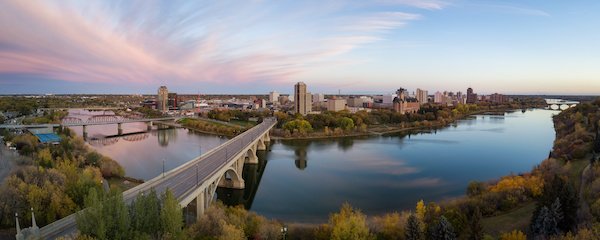- Détails

The practice of green roofing is far from novel. Since first taking root in Germany in the 1960s, the concept of using roofs to green the urban environment has taken shape in skylines across the globe. Today, the green roof industry is measured in the billions, and advances in green roof design, installation, and complementary technologies (e.g., solar photovoltaic systems) continue to bring new players to the fold.
In short, green roofs are here to stay. And as the revolution continues, it’s important to take a snapshot of Canadian successes and best practices.
A green roof primer
The term green roof (aka living roof or eco-roof) applies to any space on a roof where vegetation and a growing medium have been installed over a waterproofing membrane. These green spaces come in several varieties, including:- Intensive, featuring deeper soil and an irrigation system. These are more conducive environments for growing plants and provide stronger rooftop insulation, but require more resources and can be heavier on the roofing system.
- Extensive, featuring a shallow growing medium and little to no irrigation. These green roofs are easier and more cost-effective to set up but are limited in what they can grow.
Laying the groundwork
There are limiting factors to consider when installing a green roof. For example, explains Colin Tougas, Project Engineer with RJC Engineers, the lifespan of a waterproofing membrane may limit how long it might flourish. Other challenges include finding plants and materials that fare best under specific regional conditions, as well as establishing a green roof infrastructure that will remain intact conditions over the long haul.“If you allow for collaboration between professional landscape architects and the building envelope engineers, these impacts can be mitigated,” Tougas says. “But going with a green roof doesn’t necessarily mean increasing your structural requirements.”
As such, recommendations for creating a sustainable living roof include:
- Design for a waterproofing system with an extended service life
- Choose locally sourced materials and components
- Select local plant species to ensure resiliency.
Green roof showpieces
Canada is home to several world-class green roofs. The six-acre living roof at the Vancouver Convention Centre in British Columbia, for example, is the largest of its kind in Canada and the biggest non-industrial vegetative roof in North America. Other showpieces include the expansive green roof at the Rio Tinto Alcan Planetarium in Montreal, Quebec; the ocean-side green roof with wind turbines at the Seaport Farmers' Market in Halifax, Nova Scotia; and the 10,000 sq. ft. fruit and vegetable garden at Rye's HomeGrown at Toronto Metropolitan University, to name just a few.RJC Engineers has also been proud to help several world-class green roofs take shape across Canada. They include the eye-catching waved green roof installed at the Victoria Airport Harbour in British Columbia; the lush living roof installed at the 52 Division Police Station in Toronto, Ontario; and the eco-roof feature topping The Duke high-rise rental tower in Vancouver. These and other residential projects have laid the groundwork for green roof innovations that continue to flourish.

